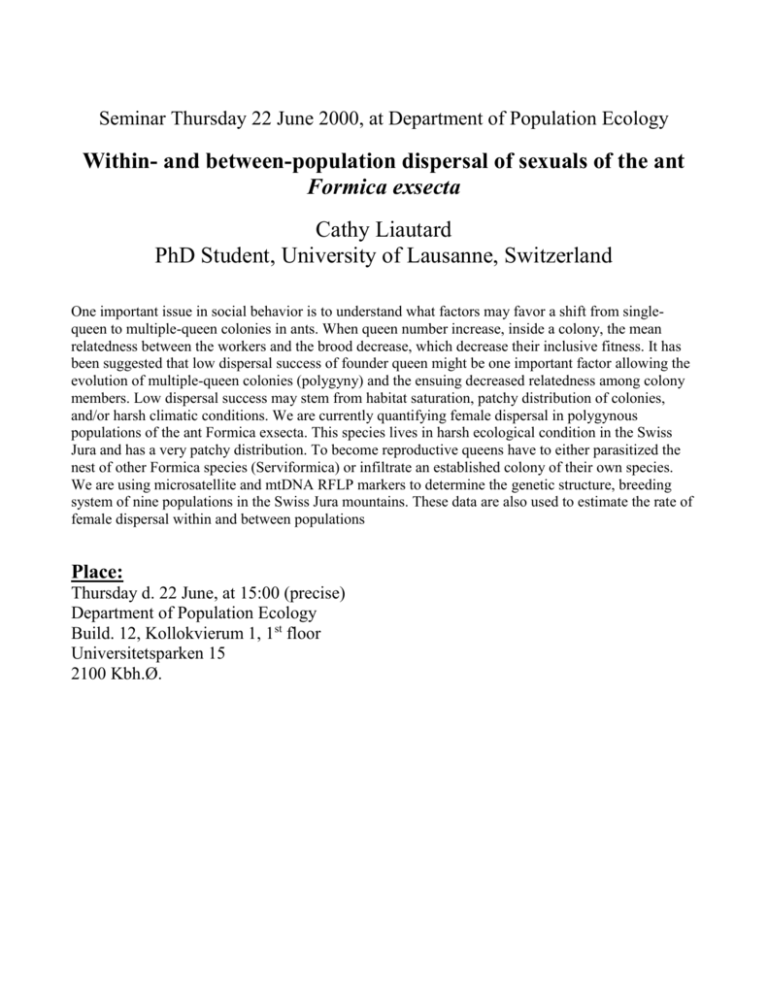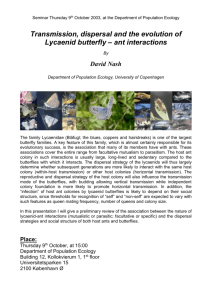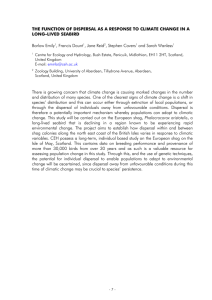Within- and between-population dispersal of sexuals of the ant
advertisement

Seminar Thursday 22 June 2000, at Department of Population Ecology Within- and between-population dispersal of sexuals of the ant Formica exsecta Cathy Liautard PhD Student, University of Lausanne, Switzerland One important issue in social behavior is to understand what factors may favor a shift from singlequeen to multiple-queen colonies in ants. When queen number increase, inside a colony, the mean relatedness between the workers and the brood decrease, which decrease their inclusive fitness. It has been suggested that low dispersal success of founder queen might be one important factor allowing the evolution of multiple-queen colonies (polygyny) and the ensuing decreased relatedness among colony members. Low dispersal success may stem from habitat saturation, patchy distribution of colonies, and/or harsh climatic conditions. We are currently quantifying female dispersal in polygynous populations of the ant Formica exsecta. This species lives in harsh ecological condition in the Swiss Jura and has a very patchy distribution. To become reproductive queens have to either parasitized the nest of other Formica species (Serviformica) or infiltrate an established colony of their own species. We are using microsatellite and mtDNA RFLP markers to determine the genetic structure, breeding system of nine populations in the Swiss Jura mountains. These data are also used to estimate the rate of female dispersal within and between populations Place: Thursday d. 22 June, at 15:00 (precise) Department of Population Ecology Build. 12, Kollokvierum 1, 1st floor Universitetsparken 15 2100 Kbh.Ø.











